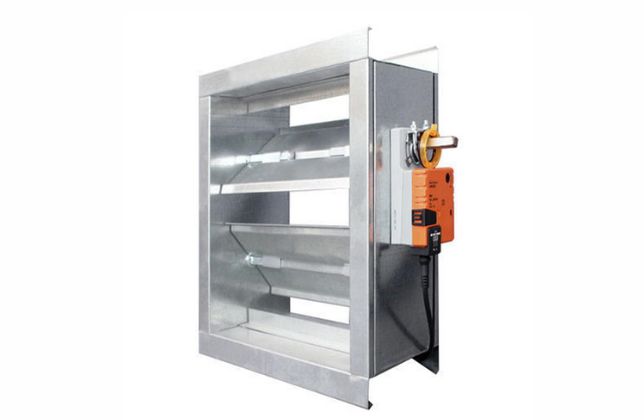Motorised Fire Damper
Truestar Air Systems
Motorised Fire Damper
An essential part of a building’s fire safety system is a motorised fire damper, which is made especially to stop smoke and flames from spreading through HVAC ductwork in the case of an emergency. The following are the main attributes and purposes of motorised fire dampers:

Function: A motorised fire damper’s main job is to stop fire and smoke from spreading through HVAC ducting by automatically closing in response to a fire alarm. The damper helps compartmentalise the building by sealing off duct openings, preventing the spread of fire and safeguarding people and property.
Operation: When a fire alarm system sounds, motorised fire dampers with an electric motor or actuator attached automatically close the damper blades. Additionally, these dampers might contain a failsafe feature that enables them to shut down on their own in the event of a signal or power outage.
Design: To survive high heat and fire exposure, motorised fire dampers are usually built using sturdy materials like stainless steel or galvanised steel. When the motor or actuator is activated, the spring mechanism that holds the damper blades open is released, causing them to close.
Fire Rating: In accordance with industry standards like UL 555 and UL 555S, motorised fire dampers are tested and rated for fire resistance. These standards outline the temperature resistance, fire rating, and leakage requirements for fire dampers according to the intended use and building location.
Installation: When fire compartmentalization is necessary, such as in fire-rated walls, ceilings, or floors, motorised fire dampers are placed inside HVAC ductwork at key points. To guarantee that the damper functions properly and does not obstruct airflow when closed, proper installation is crucial.
Testing and Upkeep: To guarantee that motorised fire dampers function properly in the case of a fire, they need to be tested and maintained on a regular basis. This entails routine testing, service, and inspection by trained individuals to confirm the damper is operating, functioning, and maintaining its integrity.
Code Compliance: Building rules and regulations that regulate fire protection systems, such as NFPA 80 (Standard for Fire Doors and Other Opening Protectives) and NFPA 90A (Standard for the Installation of Air-Conditioning and Ventilating Systems), apply to motorised fire dampers. By adhering to these guidelines, fire dampers are guaranteed to be installed, tested, and maintained in accordance with industry standards.



